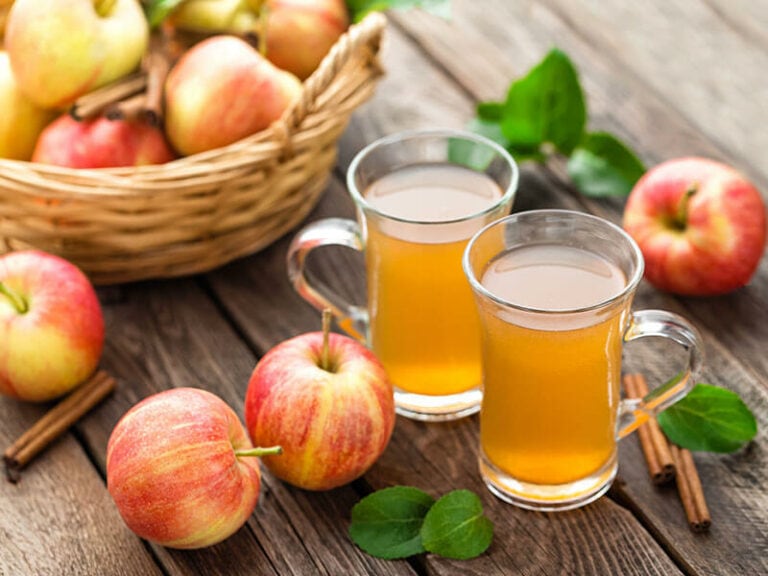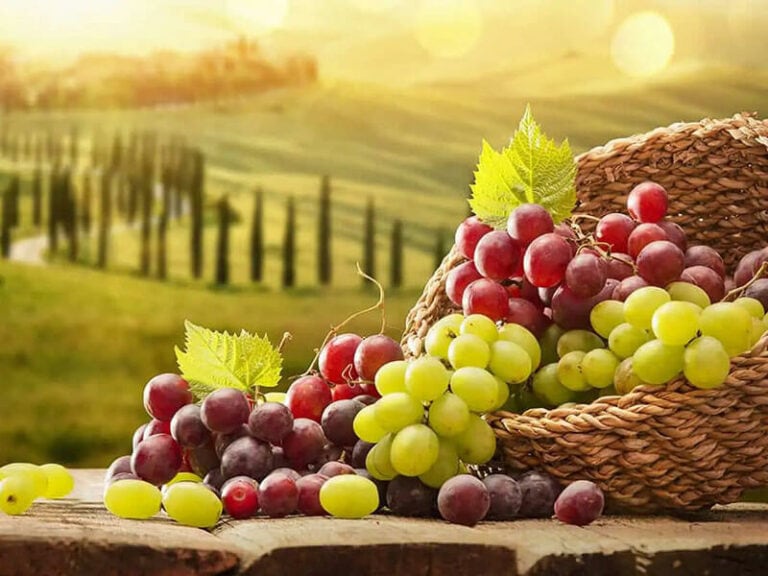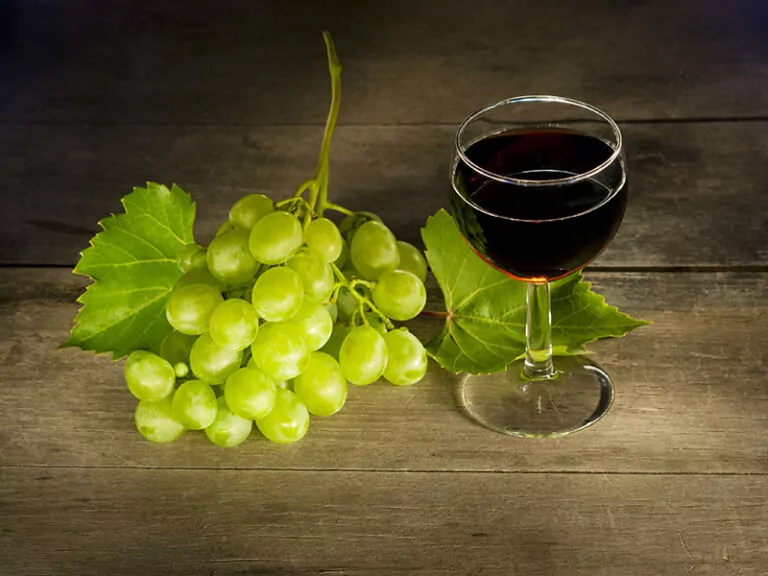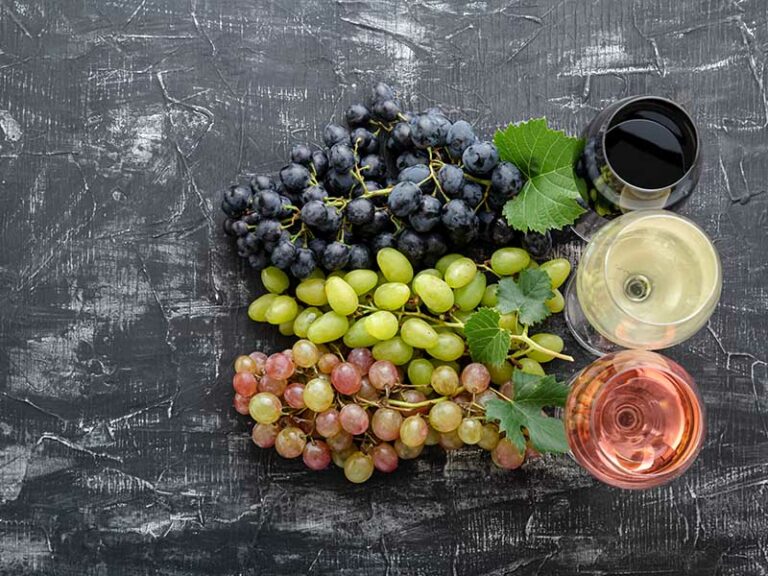How long do grapes last in the fridge? The thing with grapes is they’re only sold in bunches, and most of the time, the best-looking grapes come in the biggest bunches.
As a grape lover, you were confident that you could finish that bunch in a day, but it turned out you couldn’t. Therefore, you need a way to keep your grapes fresh.
To put it simply, storing grapes in the fridge is your best bet. You may think these juicy grapes will be safe and sound in the cold temperature for good; however, it’s not always the case. Let’s find out what the shelf life of grapes is and what you can do to lengthen them.
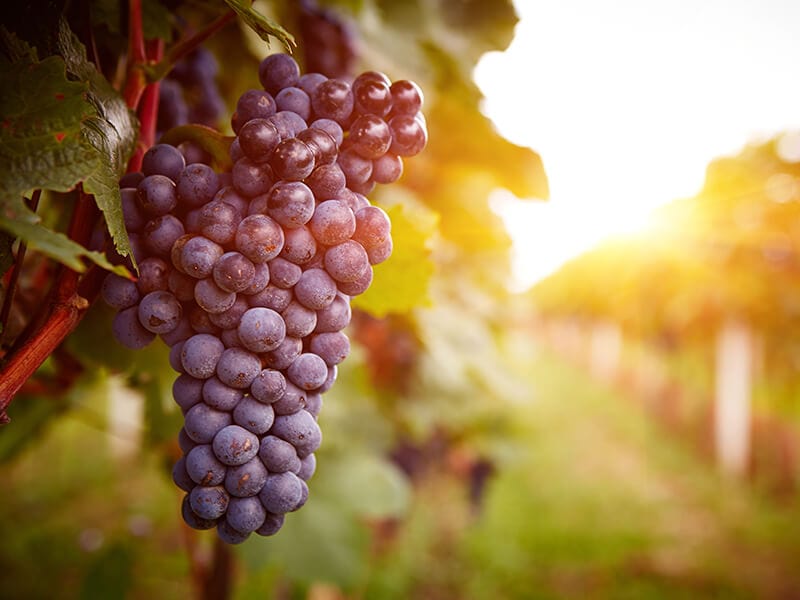
Some Insight About Grapes
A grape is a fruit, or a berry in botanical senses, of the woody vines. Grapes can grow in any climate since they are non-climatic types of fruit. The fruits usually grow in big clusters, hanging down from the vines.
Not many people know that grapes are in the top 5 fruits produced in the world nowadays. No fruit can rival the production of grapes, with 78 million tons produced annually.
Let’s take a look at the history of this ancient fruit to know when it got so much love.
Origin of Grapes
The cultivation of this fruit dates back thousands of years ago, and people have been using grapes as food and drinks throughout history. The Middle East of Asia is considered the homeland of grapes. People began to cultivate this plant 6,000 – 8,000 years ago.(1)
The discovery of the first alcoholic wine was due to the finding of the first domesticated microorganisms (yeast) on the skin of grapes.
Grapes hold so much cultural significance that people invent grape culture (or viticulture) to refer to their dominance in various aspects of culture.
Viticulture is the process of cultivation and harvesting grapes, which involves any dynamic in the production of grapes. On the other hand, viniculture deals with any events in winemaking.
It later spread westward to the ancient cities of Crete, Bosporus, and Thace in 3000 BC. Under the influence of Rome, grape production began to spread throughout Europe.
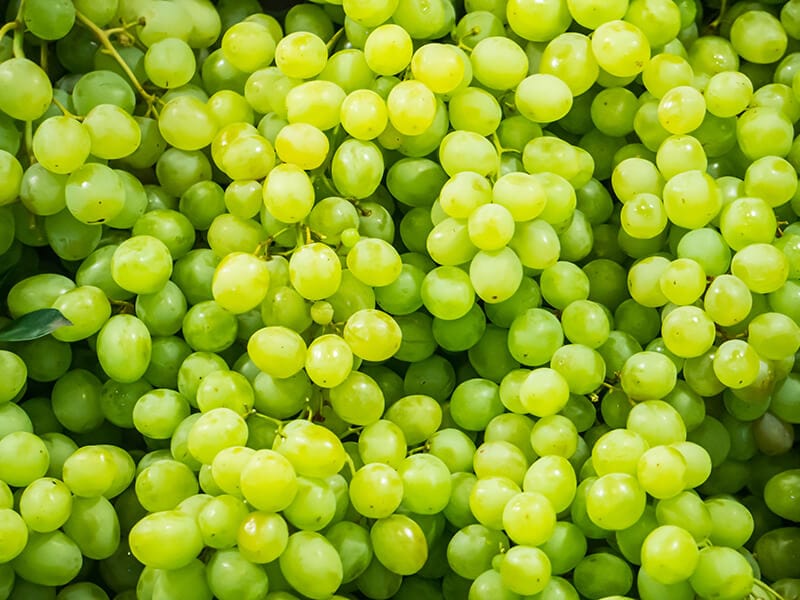
The Many Uses of Grape
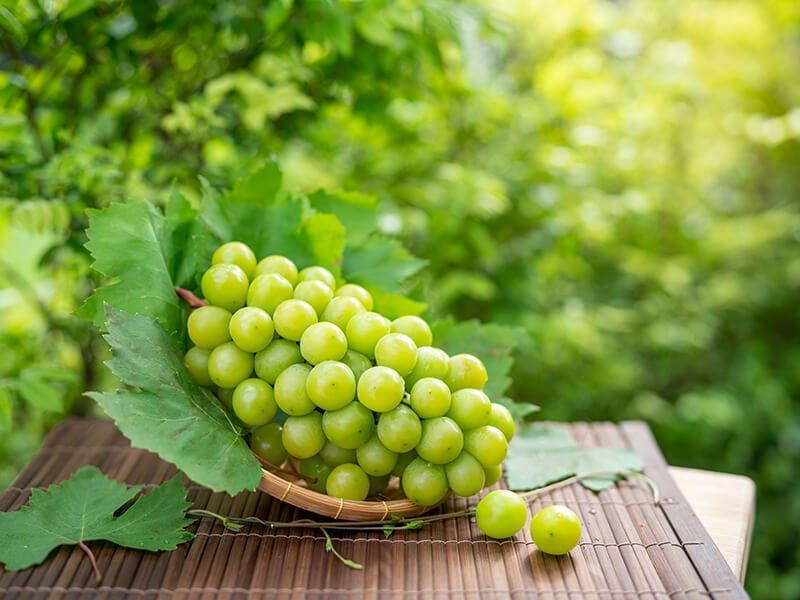
From ancient times, people have been using grapes in many products. The three primary uses for grapes are wine, fresh table grapes, and dried grapes (raisins).
- Winemaking: The most prevalent use of grapes is in wine production. Trillion gallons of wine made from grapes are produced each year worldwide. The reason why grapes conquered the world of alcohol is because of their fermentation nature.
- Raisins: Drying grapes (raisins) to lengthen their life has been around for some thousand years. Raisins are very healthy, for they contain fiber and antioxidants.(2)
Raisins are commonly used in baked goods and for snacking. There are three drying methods: sun drying, shade drying, and mechanical drying.
- Fresh grapes: They account for less consumption in total production due to their short shelf life and transportation cost. Fresh grapes are primarily consumed in the country where they come from.
Whether eaten fresh or dried, grapes play an important role in cuisine culture in many parts of the world. Many other products are made from grapes, such as jam, juice, oil, candy, and vinegar.
Learn about the cultivation and harvest of grapes in America now!
What Is The Shelf Life Of Grapes?
The shelf life of grapes is typically short, but you can increase it with proper storage. Here is a brief table about the shelf life of grapes in different storage conditions:
Fresh Grapes Shelf Life
Fresh grapes will last 3-5 days on the counter at room temperature. To keep the original freshness and prolong shelf life, you should keep grapes in the fridge. They can last up to 14 days in low temperatures.
However, some other factors can make those numbers fluctuate a little bit. The number of days it had been resting on the supermarket counter and when they were harvested and packaged also dictated their shelf life.
Remember to check their condition daily if you have good reasons to store your grapes outside the fridge. When you spot they are turning soft, finish them off within that day, or else you will have to dispose of them all the next day.
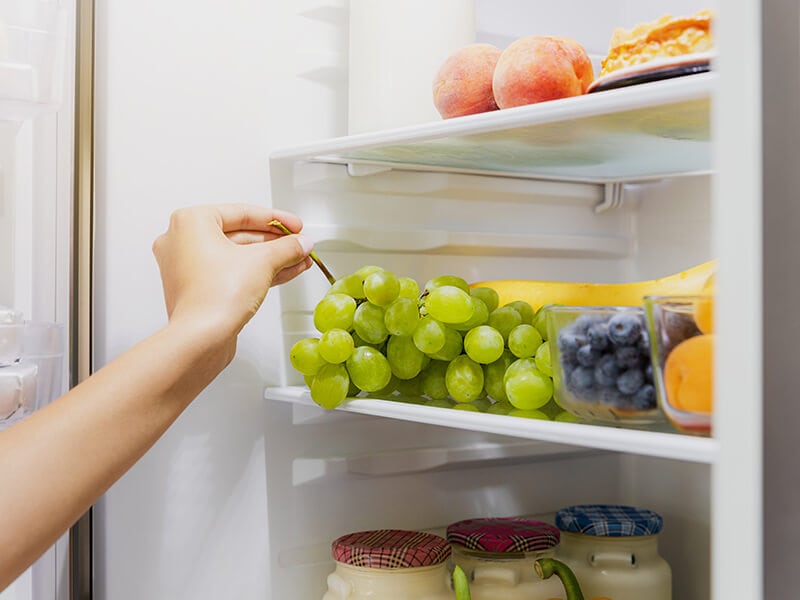
Dried Grapes Shelf Life
For dried grapes or raisins, you can expect a much longer shelf life. Dried fruits generally have no moisture for the bacteria to thrive, making them edible for longer. Raisins can last 6 -12 months at room temperature and up to 1 year in the fridge.
Never think that raisins don’t go bad; if you keep them in moisturized areas, raisins can mold on the surface. If that ever happens, please dispose of your raisins immediately.
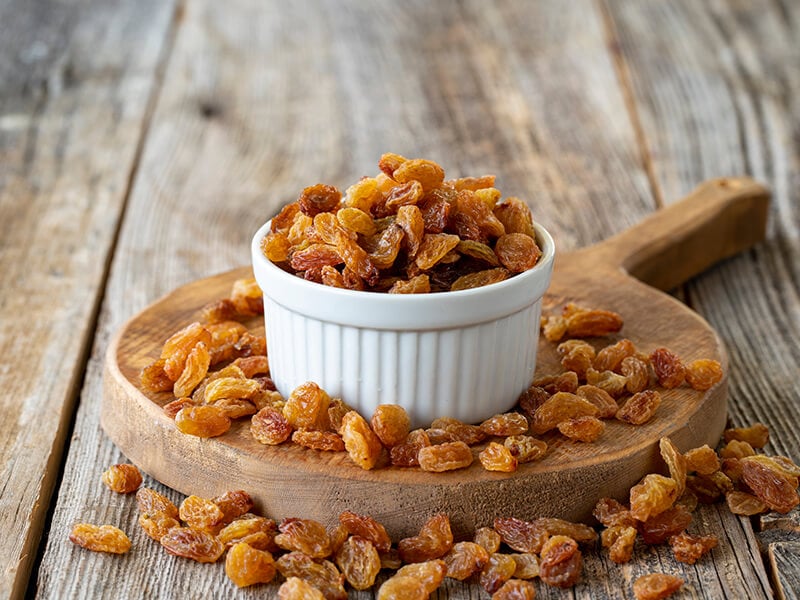
How To Choose Fresh Grapes
Everyone wants to choose the freshest and ripe grapes for their family, but only some know how to. Here are some tips for choosing your grapes.
Examine The Skin
The skins of the grapes are the first thing that reveals a lot about the condition of the grapes. The skin tone should be well-colored. Discoloration in any grape is a sign the grapes are not fresh.
It’s better when grapes still have a light silver-colored dusting on the skin. People usually mistake it for dirt, but it’s called bloom, which is the fruit’s mechanism to protect the fruit from drying or spoiling. Bloom indicates your grapes are ripe and extra fresh!
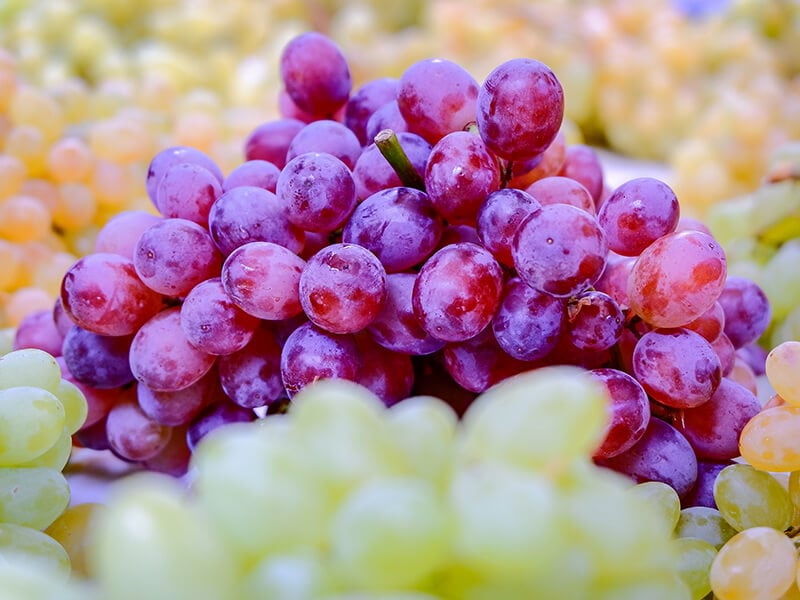
Examine The Texture
Ripe and fresh grapes should be firm and plump. If you spot some wrinkles where the stem meets the fruits, those grapes are not in good condition.
When buying packaged grapes, avoid the package with too much moisture inside. Those grapes might have been in that condition for a while, and mold may have already formed.
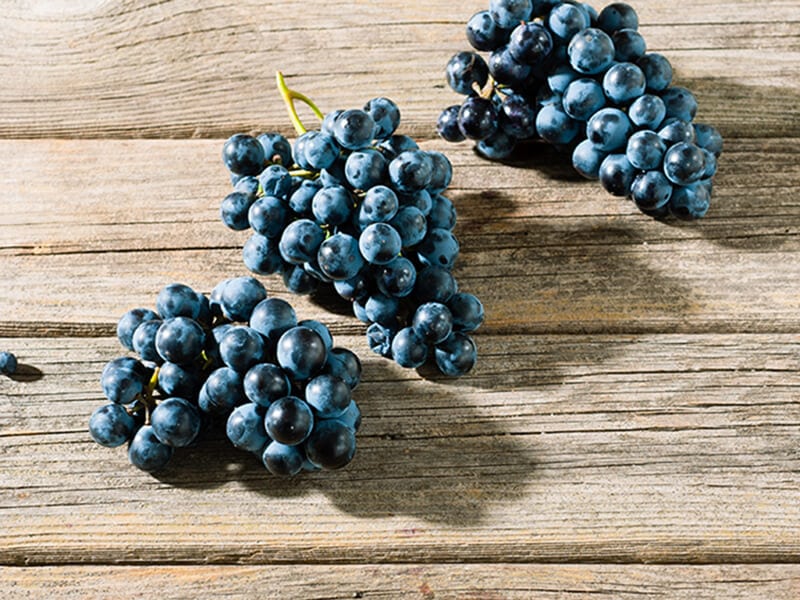
Check The Stem
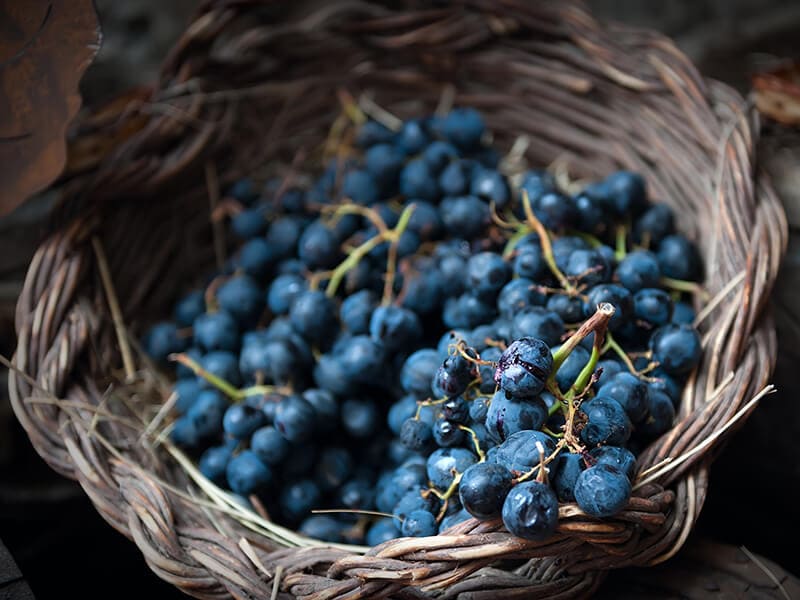
The stem is like a path that transports nutrients to nurture the fruits. You can tell the health of your grapes by examining their stems.
The stem of fresh grapes should be green and elastic. A brown and soft stem signifies that the grapes may be old or ill. Also, check whether most grapes hang firmly to the stem; good attachment is a sign of healthy and fresh grapes.
Learn how to grow your organic grapes at home.
How To Store Grapes?
Grapes are not the most resilient fruit out there. They tend to go bad after a short time, and when a grape goes bad, it will trigger a chain reaction that causes other grapes to spoil. However, you can improve their shelf life with proper storage. Here are some tips for you:
Storing Grapes In The Fridge
You cannot find a better place to store your grapes than the fridge. The low temperature and the concealment constitute a haven for your grapes. They will stay fresh the longest at about 30-32 °F (-1 – 0°C) with 90-95% humidity.
You should put them deep inside the fridge where the temperature is the lowest and most stable. Always keep them far away from odor sources like fish and leftovers since grapes easily absorb odors from the content in the fridge.
Keep The Stem On
Your grapes spoil faster after you have plucked off their stem. You can easily see this in the stemless grapes. Removing the stem always leaves a hole in the grape’s skin, making them more vulnerable to harmful agents.
Moreover, the stem still contains nutrients and moisture even after being plucked off from the vine. Those excess nutrients can keep your grapes fresh for a while.
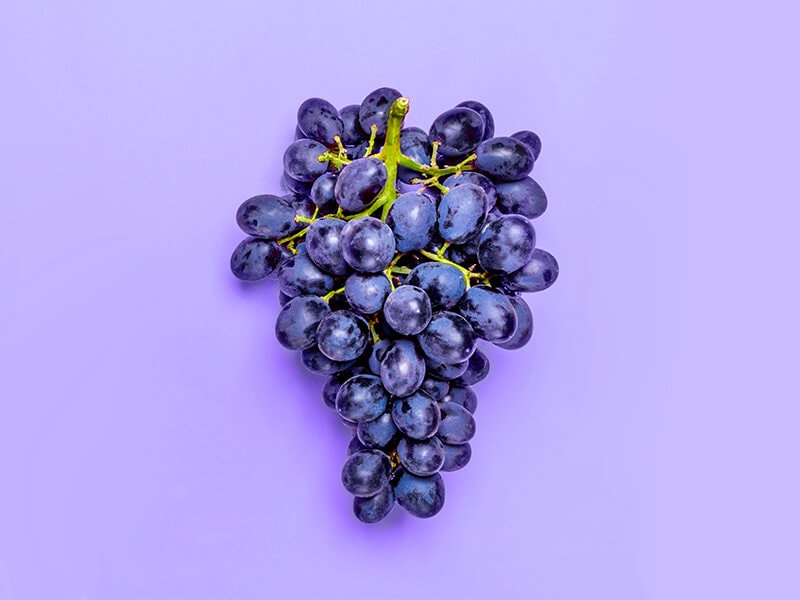
Never Wash Before Store
The first thing people tend to do after returning from the grocery trip is to rinse off their goods. Unless you want to devour those fresh grapes immediately, you might want to hold off on the rinsing process.
Washing before storing gives your grapes unnecessary moisture that accelerates the decaying process of the fruit. Ideally, they should be kept as dry as possible before entering the fridge.
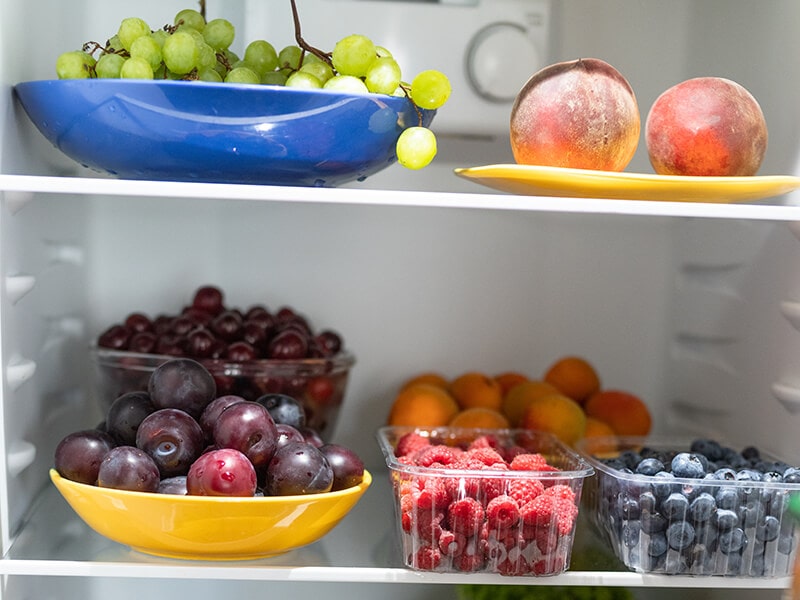
Check Your Grapes Carefully Before Storing
As the saying goes: One rotten apple spoils the barrel, a spoiled grape can trigger a chain reaction that makes the whole bunch rot. It’s best to check the whole bunch and remove bad grapes at once! They are the spies that corrupt your grapes from the inside.
Ventilation Is The Key
Most people think it would be better to store grapes in complete concealment to keep them away from outer influences. However, it turns out to be a terrible idea.
Grapes need some room to last. Locking them up in an air-tight container generates humidity promoting bacterial growth. It’s best to store them in a plastic box or ventilated bag from the original package.
Separate a large bunch of grapes into smaller clusters to store. That will give your grapes more room to breathe as it improves air circulation and gives less space for the formation of moisture. Good air circulation reduces the chance of mold and prolongs its shelf life.
Signs Your Grapes Have Gone Bad
It’s not hard to tell if your grapes have gone bad. Here are some signs you should look for if your grapes have not been eaten for too long.
Abnormality In Texture
The plumpness of grapes always deteriorates over time, whether on the counter or in the fridge. This is due to the loss of water inside the fruit. When you see excessively soft wrinkles on the skin, you should think of discarding them.
The Pungent Smell
If they have an off-putting smell, there is a great chance your grapes have spoiled. It may smell like vinegar since they have fermented. Never think eating some grapes that have gone bad won’t harm anyone. They’re rotten with bad bacteria, my dear.
However, don’t throw away your grapes too fast. The thin skin of grapes makes them susceptible to absorbing smells.
Check their surroundings to see if there is any source of odors that gives off the smell. The smell is not the most reliable way to check the grapes’ freshness.
Change In Color
If you find any sign of discoloration, spots, or moldy color on their skin, you should double-check if they have gone bad. The brown spots on the grapes are signs of spoilage.
Appearance Of Mold
Mold is the final nail in the coffin, and it’s high time you throw away your grapes. Consuming foods with mold is extremely detrimental to your health.
But be careful since you can mistake bloom for mold. They both appear like white dust on the skin, but mold is thicker and in clusters, while the bloom is like chalk dust.
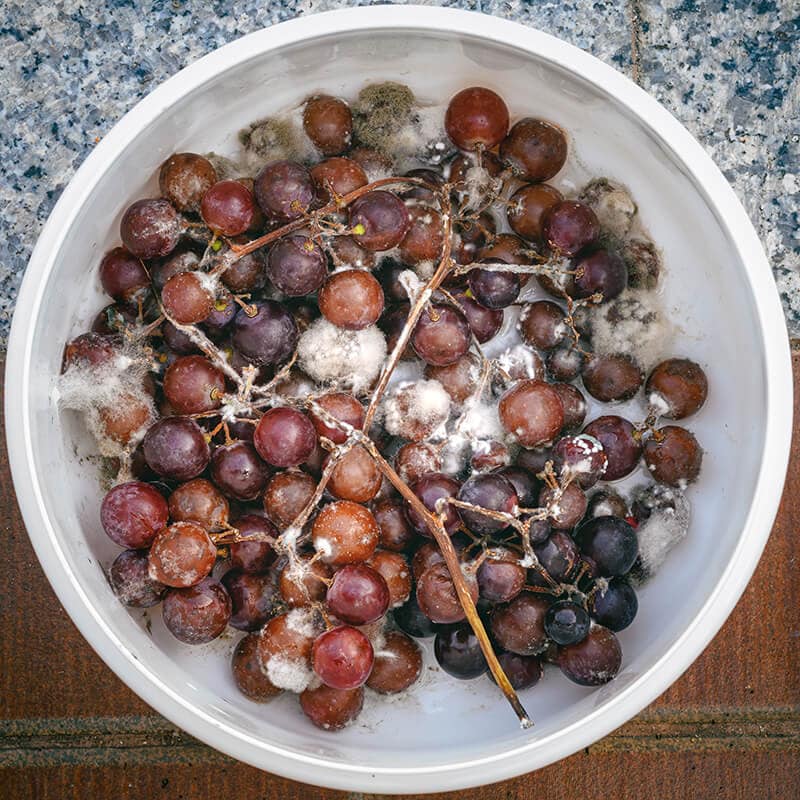
Last Resorts Before Your Grapes Go Bad
If you find that your grapes are going to spoil soon, but there is no way you can eat them all at once, there are some ways that you can do to save your beloved fruits.
Grapes Jam
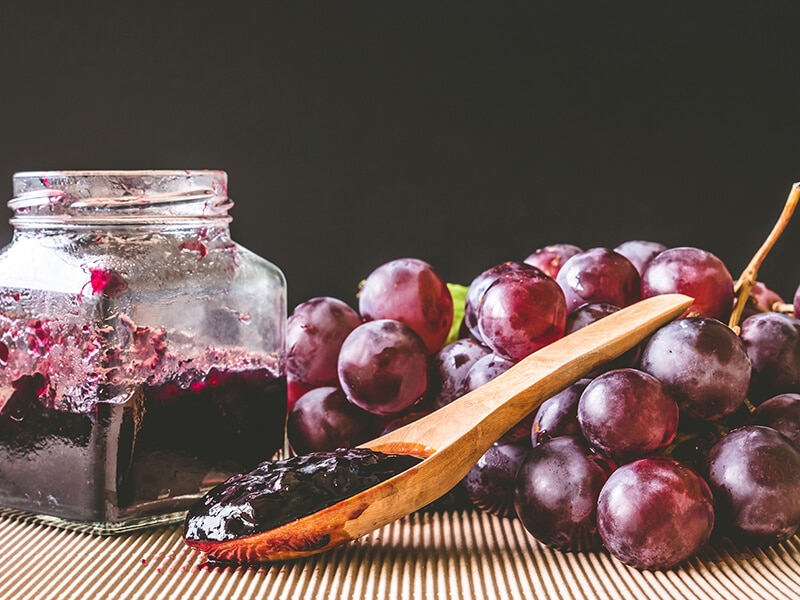
You can use your nearly-spoiled grapes in making grape jam. To do this, slip the skins off the grapes and puree them. Then slowly boil the mixture of peeled grapes, lemon juice, and sugar until it gets thick.
Learn how to make the best grape jam to satisfy your thirst for sweetness!
Grape Smoothie
Turning grapes into smoothies is the fastest way to enjoy them. Peel the grapes and take the seeds out. Put them in the blender with milk, other fruits, or vegetables, and blend them nicely. You will soon have a delicious homemade grape smoothie!
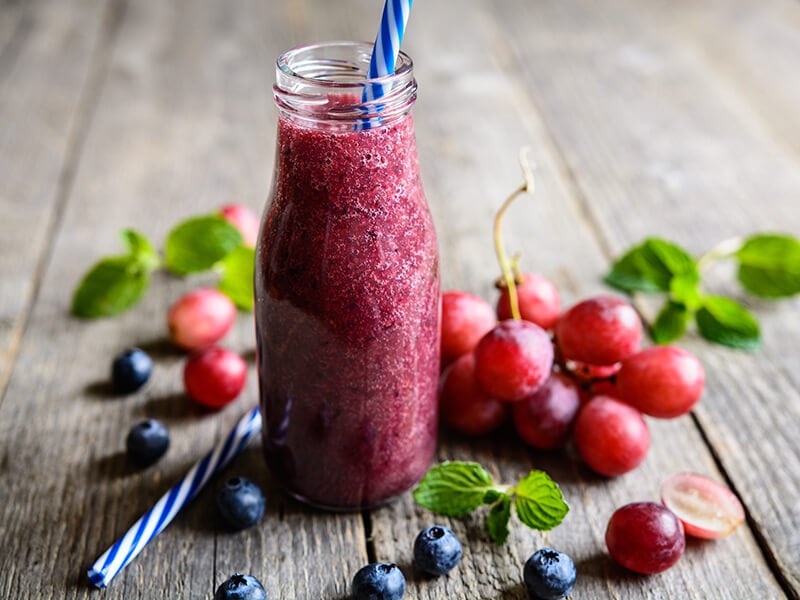
Fruit Salad
You can not forget the healthy and tasty fruit salad. You can use a lot of grapes in this dish combined with other fruits and vegetables. Also, grapes taste extremely good in a fruit salad with their sweet and sour taste.
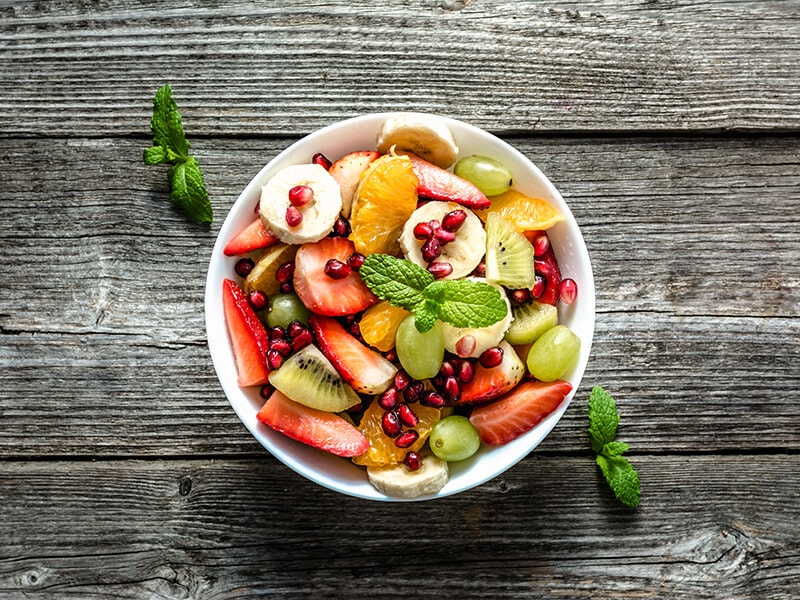
Freeze Them
You might have never heard of this, but frozen grapes make great wine ice cubes, especially in grape wines. To do this, rinse them in water, let them dry out, remove the stems, then lay them on the tray with wax paper to keep the grapes separated.
These frozen grapes can also be used in smoothies or as a chilled snack. Once you have decided to freeze them, remember that they will never be your fresh grapes again, even after you defrost them. Grapes can last 10-12 months in the freezer.
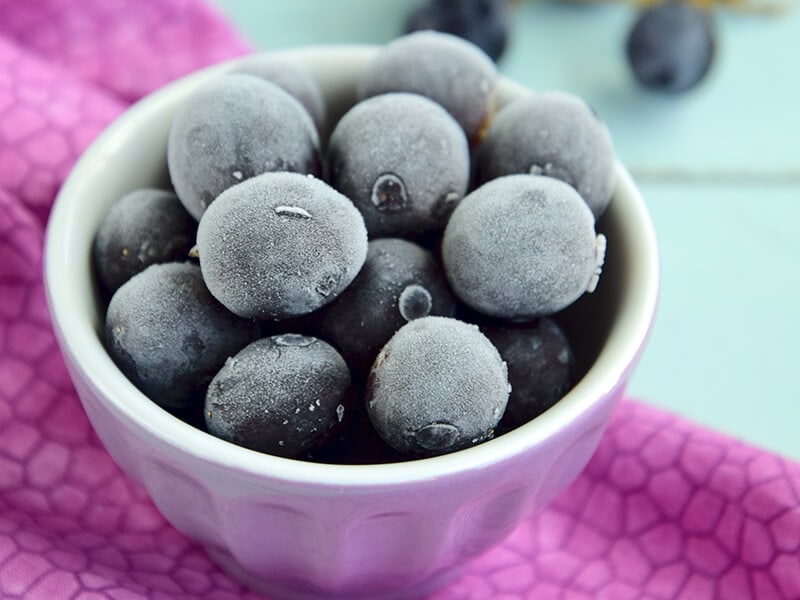
FAQs
You have learned about how to store grapes properly and how long they can last in various storage conditions. There is some more knowledge for you in this FAQs section.
Grapes Are Among The Best Things On Earth!
Grapes are an excellent choice of fruit. Besides the tastiness and culinary uses, they are the best source of natural essential nutrients. However, they are among the most fragile things. You should be careful with handling and storing them.
One last thing, leave your comment about your tips on storing grapes. Don’t forget to share it with other people who are grape lovers too!
References
- Grape (2022) Wikipedia. Wikimedia Foundation.
- Olmo-Cunillera, A. et al. (2019) Is eating raisins healthy? Nutrients. U.S. National Library of Medicine.

